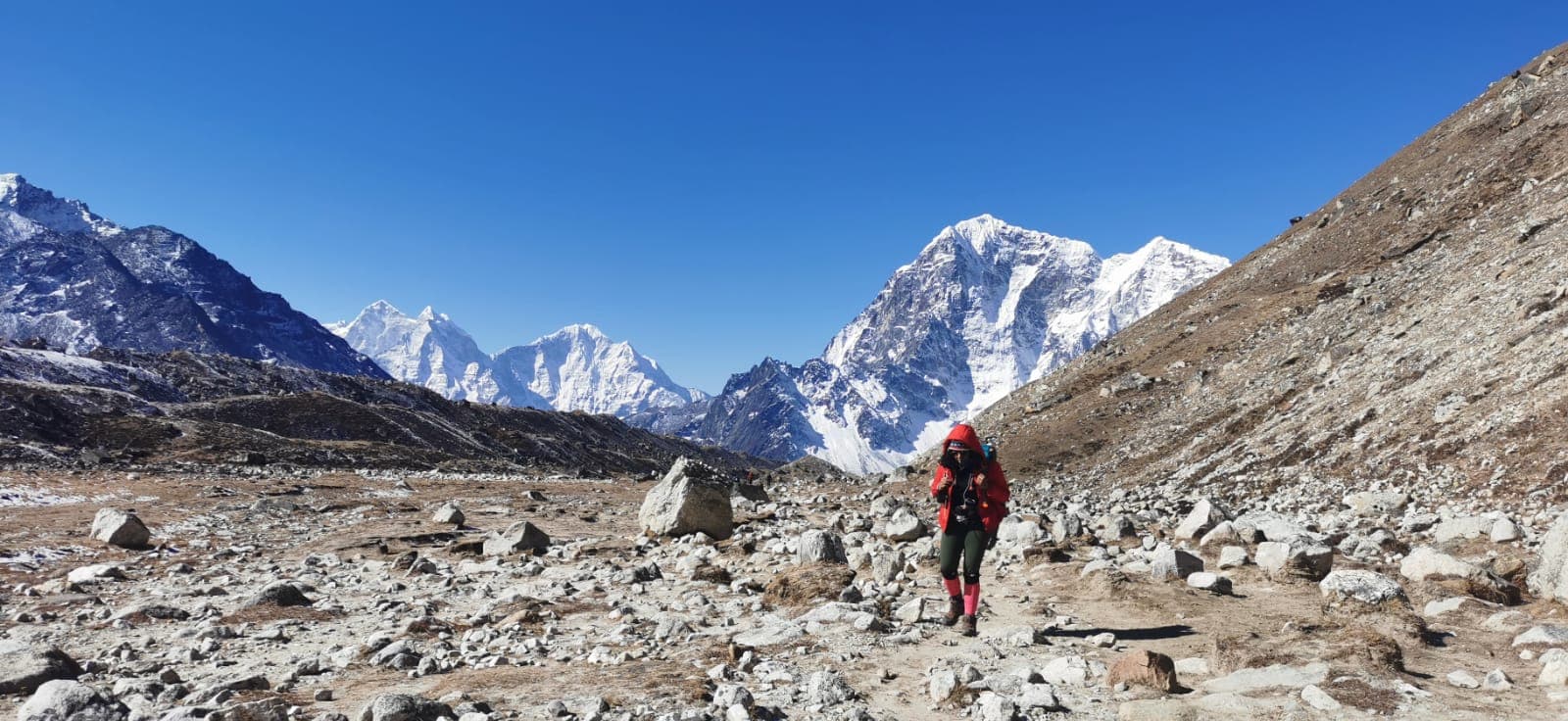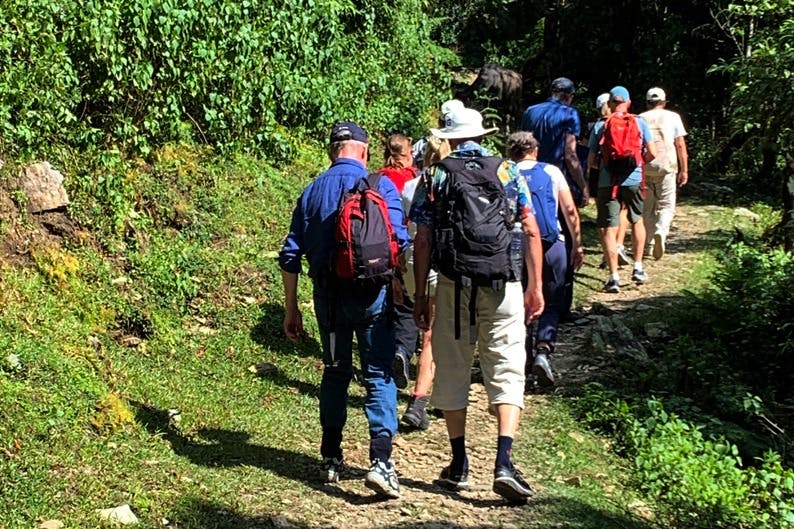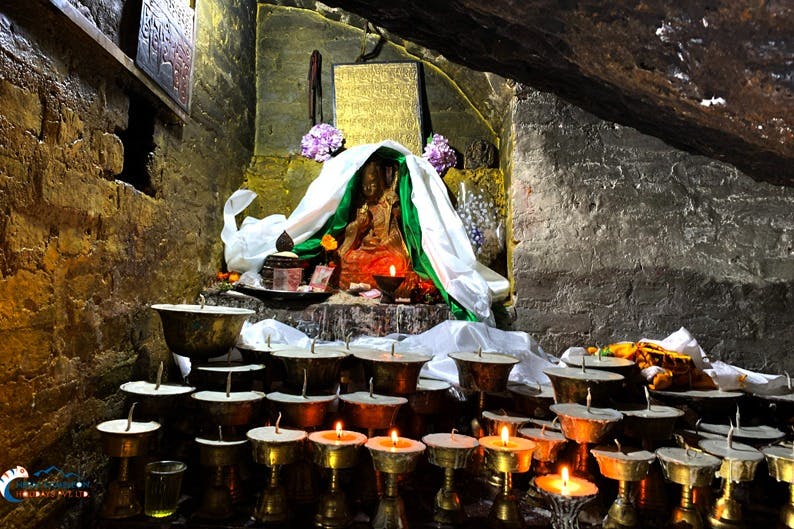One of the most popular trekking regions in the world- the Everest region welcomes thousands of trekkers from around the globe. The Everest region trekking is also known as the trekking in the Khumbu region. It is such an elegant trip that exceeds your imagination, with the mesmerizing view of Mount Everest and its vicinity peaks, delightful biodiversity in the Sagarmatha National Park, and the luminous culture of the Sherpa people.
Trekking in the Everest region has an abundant number of trekking destinations and highlights you can get throughout the trekking. Everest Base Camp and Kalapatthar Trek, Gokyo Lakes Trek, Everest Three Passes Trek, Everest View Trek, and Everest Gokyo Cho La Pass Trek are the most popular adventure in the Khumbu region.
-0.jpg)
Everest Base Camp (EBC) Trek
Everest Base Camp Trek (EBC Trekking) has enticed trekkers who are keen on adventure trekking in the Himalayas. Another reason for being so popular is following the path of Tenzing Norgay and Edmund Hillary, who sumitted Mt. Everest in 1953 AD. Beginning the trek from Lukla, it follows the route via the Sherpa capital, following the Dudh Koshi River valley, you reach the Everest Base Camp. Kalapatthar is the most stunning viewpoint of the entire Khumbu region. Along with Mt. Everest, you will be rewarded with the surrounding peaks like Lhotse, Nuptse, Thamserku, and other peaks.
In Short:
- Duration: 12 days (itinerary can be customized).
- Starting Point: Lukla (you reach there after a 30-minute flight from Kathmandu)
- Ending Point: Lukla (same point to catch the flight)
- Major Places: Namche Bazaar, Khumjung, Tengboche, Dingboche, Gorakshep
- Last point: Mt. Everest Base Camp and Kalapatthar
- National Park: Sagarmatha National Park
- Transportation: Flight (Kathmandu-Lukla-Kathmandu)
- Accommodation: Hotels/Lodges (aka tea houses)
Gokyo Lakes Trek
Exploring the giant Gokyo Lakes in the Everest region is spectacular and outstanding in the Everest Gokyo Lakes Trek. During the trek, trekkers will explore the series of turquoise lakes that are just outstanding. Just like the EBC trek, the journey commences from Lukla, continues through the Himalayan Sherpa highland, and takes the route towards the Gokyo Lakes. The third Lakes of the Gokyo series is the prime attraction among others. A day hike to the Gokyo Ri allows you ample opportunities to explore the entire Everest region Himalayan views from different angles.
In Short:
- Duration: 12-14 days (itinerary can be customized).
- Starting Point: Lukla (you reach there after a 30-minute flight from Kathmandu)
- Ending Point: Lukla (same point to catch the flight)
- Major Places: Namche Bazaar, Khumjung, Dole, Machhermo, Gokyo Valley
- Last point: Gokyo Ri (5357 meters)
- National Park: Sagarmatha National Park
- Transportation: Flight (Kathmandu-Lukla-Kathmandu)
- Accommodation: Hotels/Lodges (aka tea houses)
.jpg)
Three Passes Trek in Everest
The thrill seekers would simply choose the Everest three passes trek undoubtedly as the trek exceeds your imagination about how picturesque the Everest (Khumbu) region is. There are three challenging high passes: Renjo La Pass, Cho La Pass, and Khongma La Pass. On the route, there lies the Everest Base Camp. Trek through the Everest three passes requires proper physical fitness and acclimatization. It's just a daring adventure, trek through Everest with three high passes and prove yourself.
In Short:
- Duration: 16-18 days (itinerary can be customized).
- Starting Point: Lukla (you reach there after a 30-minute flight from Kathmandu)
- Ending Point: Lukla (same point to catch the flight)
- Major Places: Namche Bazaar, Thame, Gokyo Valley, Gorakshep, Dingboche, Tengboche
- High Passes: Kongma La (18,209 ft. / 5,550 m), Cho La (17,782 ft. / 5,420 m), and Renjo La (17,560 ft. / 5,360 m).
- National Park: Sagarmatha National Park
- Transportation: Flight (Kathmandu-Lukla-Kathmandu)
- Accommodation: Hotels/Lodges (aka tea houses)
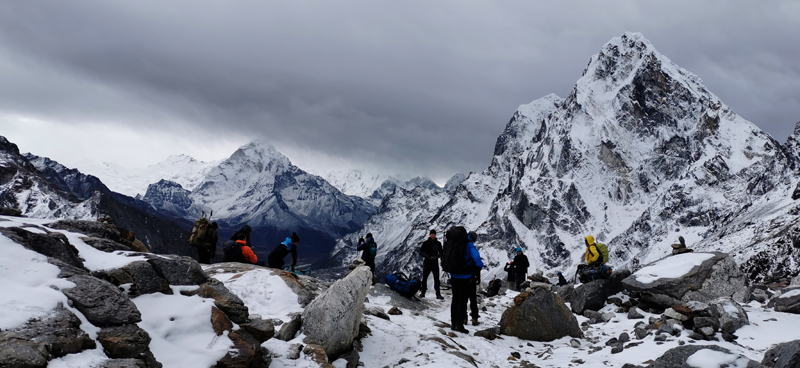
Everest View Short Trek
A short and exciting excursion in the Everest region, Everest View Short Trek is for people who are looking for an exciting trek in a limited time. You will get an overall impression of the world's some of the most delightful adventures in the Khumbu region. You will cross beautiful suspension bridges. Exploring Namche Bazaar, Khumjung, Everest View Hotel, and Tengboche Monastery offers you a lifetime experience. No doubt, the magnificent Everest Himalayan chain looks dazzling.
In Short:
- Duration: 7 days (itinerary can be customized).
- Starting Point: Lukla (you reach there after a 30-minute flight from Kathmandu)
- Ending Point: Lukla (same point to catch the flight)
- Major Places: Namche Bazaar, Khumjung, Everest View Hotel, Tengboche Monastery
- National Park: Sagarmatha National Park
- Transportation: Flight (Kathmandu-Lukla-Kathmandu)
- Accommodation: Hotels/Lodges (aka tea houses)
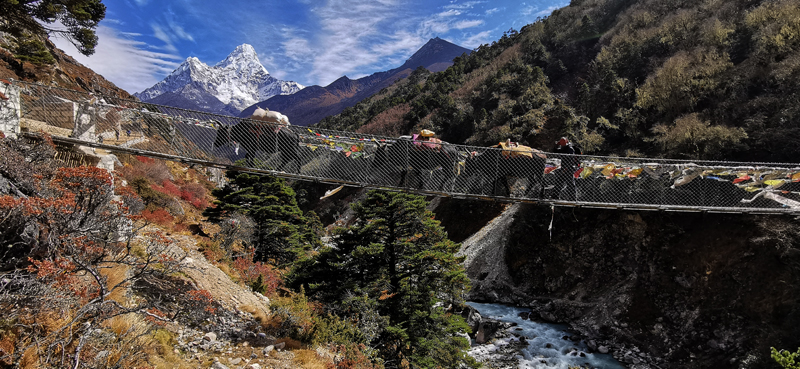
Getting There
Except for a couple of trekking, all the treks in the Everest region are from Lukla, which is a widely popular gateway of the treks. A tiny airstrip of Lukla-Tenzing Hillary airport is just a 30-minute flight from Kathmandu. After landing at Lukla, you follow the Dudh Koshi River Valley, cross several suspension bridges, and head continually through the Sherpa highland.
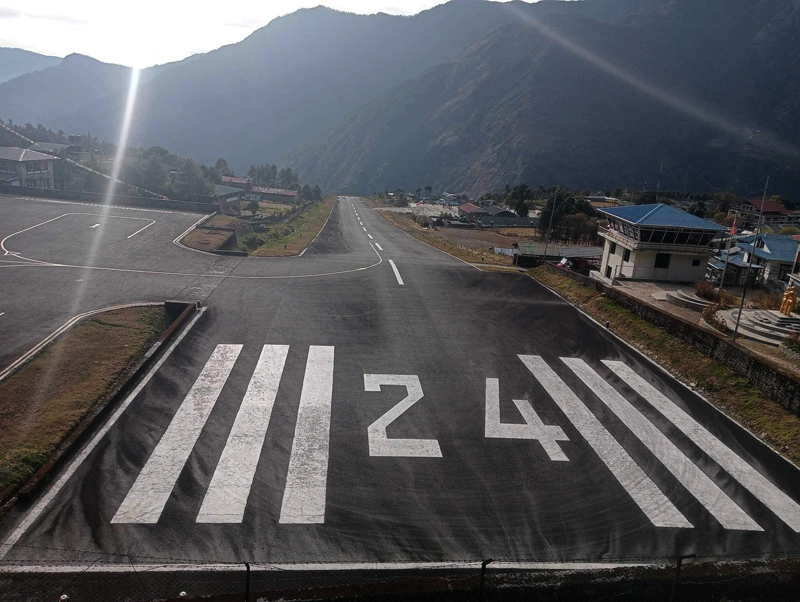
All sorts of trekking in the Everest region require proper physical fitness and acclimatization. Please note that Everest trekking is highly rewarding, but at the same time, it's challenging. We request you not to underestimate any trips, rather trek with a licensed guide, obtain trekking permits, and follow the norms and regulations of the local government authorities.
Essentials of the trekking in the Everest (Khumbu) region
Sagarmatha National Park Permit
The Everest region trekking trail lies in the Sagarmatha National Park, which covers (1,148 km2) and Buffer Zone (275 km2) area. Most of the area of this National Park is located above 3000 meters, which is a rugged terrain. Another Paperwork is a TIMS card, which should be obtained at the Nepal Tourism Board office, Bhrikuti Mandap, Kathmandu.
Altitude and Acclimatization
The lowest altitude trekking in the Everest region is Everest View Trekking, which takes you to the Tengboche Monastery, located at 3800 meters altitude. Some trekking takes you above 5000 meters, like EBC Trek, high passes trek, Gokyo trek, etc. So, while ascending towards the higher altitude above 3000 meters, you will get high altitude symptoms and acclimatization is really important for a successful trek.
Symptoms of high altitude sickness: headache, nausea, dizziness, insomnia, less appetite, dehydration, etc.
Easy solutions: drink plenty of water, stay warm, and have food with soup, ginger and garlic are far better if you feel the symptoms don't trek higher.
Best Time for the Trekking in the Everest Region
March-April-May (Spring) is great before monsoon and grab a suitable time with clear skies and amazing views.
September-October-November (Autumn) is a great time for the breathtaking Himalayan views, great walking weather, and overall aspects of the trek.
December-January (Winter): Although winter is not so favorable time for trekking in the Everest region, it is great if you would like to trek in a non-trafficked route. It is possible till the Everest base camp. High Passes Trek in Everest in winter is not recommended.
Accommodation Facilities
The Everest region has multiple options for accommodation, based on where you are.
Lodge/Teahouses: The entire Khumbu region is facilitated by the lodges (aka tea houses). They are mostly run by families but offer nice food and accommodation facilities. However, they charge extra for using wifi, hot shower, and electricity for charging your gadgets.
Hotels and Resorts: The main bustling towns like Lukla, Namche Bazaar, and Khumjung like places are much more advanced in terms of modern accommodation facilities. Your choice of sleeping in nice hotels with luxury in the mountains has come true. One of the examples is Yeti Mountain Home.
Guide and Porter
Guides: Guides are well-trained and have experience leading trekkers in various parts of the core Khumbu region. They are friendly and responsible. It will be a great opportunity to get the local cultural insight and take care of the safety of the trekkers.
Porters: Porters are the friends in the Himalayas. They carry your stuff and take you to your destination to ease your trek in the Everest region. The average weight they carry is 20kg, so a porter will be helpful for 2 trekkers.
Lukla Flights
Lukla opens the gateway to the Everest region. It is directly accessible by flight from Kathmandu, with a duration of 30 minutes. However, in the peak season, they operate flights from Manthali of Ramechhap district, which is 4 4-hour drive from Kathmandu. For your information, flights from Kathmandu sometimes can be delayed or canceled due to bad weather. In this case, it's better to manage a couple of days as reserve days.
Food Items and Menu Variations
Most of the Hotels and lodges offer a food menu with variations. They offer typical Nepali dishes, Indian, Chinese, and continental food items. If you want to have a full tummy, you can order Dal Bhat. It includes rice, lentil soup, veg curry, pickles, etc. They also serve noodles, pasta, pizza, sandwiches, and more.
Packing for the trekking in the Everest Region
Packing is a significant aspect of the trekking in Everest region. Packing well deserves a successful trekking, especially in the high-altitude region. You may prepare considering the list below.
- Sleeping bag
- Duffel bag (We provide for trekking)
- Down Jacket
- Walking poles
- Water bottle with purification tablets
- Hand wash liquids
- Lip Guard
- Sun block cream
- Toiletry kit.
Upper Body - Head / Ears / Eyes
- Cap and ears covering hat.
- Head torch
- Ear muffs and neck warmers are another piece of gear for extra warmth (optional)
Hand
- Hand gloves
Core Body
- T-shirts.
- Light and weight thermal tops.
- Light jacket.
- Wind and rainproof cheater.
- Shirts and warm shirts.
Lower Body & Legs
- Long and short hiking pants.
- Lightweight long underwear.
- Rain and windproof trousers.
Feet
- Thin and thick socks.
- Trekking boots, light shoes, and sandals.
Miscellaneous
- Passport and extra passport photos.
- Durable wallet/pouch for travel documents, money, and passports.
- Pocket knife.
- Chocolates and energy bars
- Camera
For trek inquiry and booking in the Everest region,
WhatsApp: +977 9851159455
Email: [email protected]
